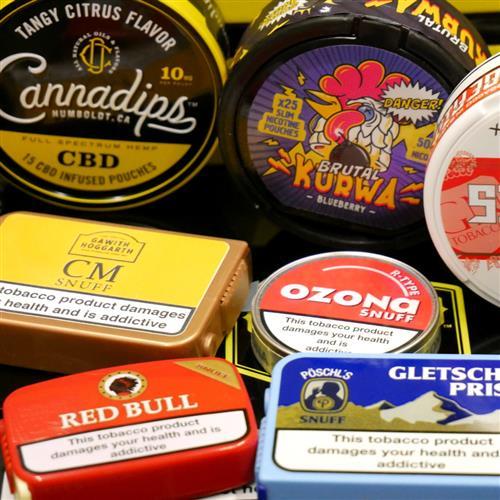Chew Bags, Nicotine Pouches & Snuff
Chew Bags, Nicotine Pouches & Snuff: A Comprehensive Overview
Chew bags, nicotine pouches, and snuff are some of the latest entries in the smokeless tobacco market. These products are gaining popularity as people look for alternatives to cigarettes and other traditional tobacco products. In this article, we provide a comprehensive overview of these products, including their composition, use, and potential health risks.
Introduction
Smokeless tobacco products, also known as oral tobacco or smoke-free tobacco, are those that are not burned before use. They are consumed by chewing, sucking, holding in the oral cavity, or sniffing. Nicotine pouches, also referred to as NPs, are an emerging class of noncombustible tobacco products. These thin, prefilled, microfiber pouches contain a range of substances, including nicotine, flavorings, and pH adjusters.
Composition of Nicotine Pouches
The primary ingredient in nicotine pouches is nicotine, a highly addictive substance found naturally in tobacco. Nicotine pouches are available in different strengths, ranging from 2mg to 12mg of nicotine per pouch. The pouches also contain other ingredients, such as cellulose and salt, which help to regulate the pH and improve the absorption of nicotine.
Use of Nicotine Pouches
Nicotine pouches are designed to be used by placing them between the gum and cheek, where they slowly release nicotine. The pouches are not meant to be chewed or swallowed, but rather left in place for around thirty minutes until the nicotine is fully absorbed.
Potential Health Risks
While nicotine pouches may be less harmful than traditional tobacco products, they are not risk-free. Nicotine is a highly addictive substance that can cause a range of health problems, including increased risk of heart disease, stroke, and cancer. Nicotine pouches may also cause gum irritation or damage to tooth enamel if left in place for too long.
Introduction to Chew Bags
Chew bags are another form of smokeless tobacco that has been around for hundreds of years. Also known as chewing tobacco, it is made by curing tobacco leaves and then cutting them into strips or small pieces. The user places a pinch of the tobacco between the cheek and gum and then chews it to release the flavor and nicotine.
Composition of Chew Bags
Chewing tobacco contains nicotine, as well as other compounds, such as nitrosamines, polycyclic aromatic hydrocarbons (PAHs), and heavy metals. These compounds are known to increase the risk of cancer and other health problems.
Use of Chew Bags
Chewing tobacco is typically held in the mouth for around 20-30 minutes, during which time the user will spit out the saliva and tobacco juices that are generated. Some users may also swallow the juices, which can lead to gastrointestinal problems.
Potential Health Risks
Chew bags are associated with a range of health risks, including an increased risk of oral cancer, gum disease, and tooth loss. They can also cause bad breath, staining of the teeth, and other cosmetic problems.
Introduction to Snuff
Snuff is a finely ground tobacco that is typically sniffed or snorted through the nose. It is commonly used in countries such as Sweden, where it is known as snus. In recent years, snuff has gained popularity in other parts of the world as well.
Composition of Snuff
Snuff contains nicotine and other chemicals, such as formaldehyde, nitrosamines, and polycyclic aromatic hydrocarbons (PAHs). These compounds are known to increase the risk of cancer and other health problems.
Use of Snuff
Snuff is typically placed in the nostrils using a small spoon or placed between the lower lip and gum.
Potential Health Risks
Like other smokeless tobacco products, snuff is associated with a range of health risks, including an increased risk of oral cancer, gum disease, and other health problems. Snuff can also cause nosebleeds, irritation of the nasal passages, and other problems.
Conclusion
Chew bags, nicotine pouches, and snuff are all examples of smokeless tobacco products. While they may be less harmful than traditional tobacco products, they are not without risk. Nicotine is a highly addictive substance that can cause a range of health problems, including an increased risk of cancer, heart disease, and stroke. If you are considering using these products, it is essential to be aware of the potential health risks and to use them in moderation.
